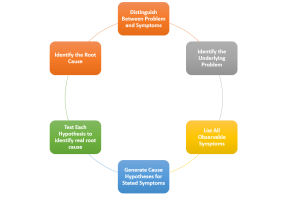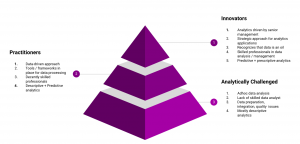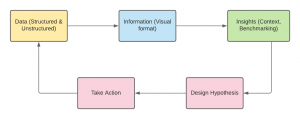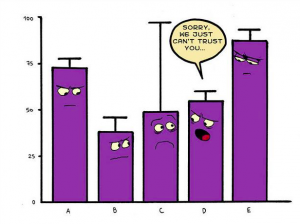Tag Archives: analytics
Problem, Symptoms & Root Cause Analysis (RCA) Examples

Last updated: 30th Jan, 2024 Have you found yourself stuck in a cycle of solving the same or similar problems over and over again? Ever wondered why some solutions seem to only offer a temporary fix? Have you wondered if you have identified the correct problem or if you are trying to fix one of the symptoms? The key lies in your understanding of how we define problem statements, associated symptoms, root causes, and approach to problem-solving, which is fundamentally rooted in analytical thinking and critical thinking. What exactly is the difference between a problem and its symptoms? And why is it crucial to conduct a root cause analysis to …
Analytics Maturity Model for Analytics COE

As businesses continue to embrace digital transformation, data analytics has become an essential component of business strategy. As a result, many organizations have established or are in the process of setting up an Analytics Center Of Excellence (Analytics COE) to drive analytics initiatives and improve their overall data-driven decision-making capabilities. TO achieve this objective, analytics COE requires a framework for assessing the maturity of their analytics practice. This is where analytics maturity model kicks in. The Analytics Maturity Model can be defined as a framework that enables organizations to assess their current analytics capabilities, identify areas for improvement, and establish a roadmap for analytics maturity. It provides a structured approach …
Actionable Insights Examples – Turning Data into Action

In this post, you will learn about how to turn data into information and then to actionable insights with the help of few examples. It will be helpful for data analysts, data scientists, and business analysts to get a good understanding of what is actionable insight? You will understand aspects related to data-driven decision making. Before getting into the details, let’s understand what is the problem at hand? The school authority is trying to assess and improve the health of students. Here is the question it is dealing with: How could we improve the overall health of the students in the school? We will look into the approach of finding the …
Top 10 Types of Analytics Projects – Examples

In this post, you will learn about some of the most common types of data analytics projects which can be executed by the organization to realise associated business value from analytics projects and, also, gain competitive advantage with respect to the related business functions. Note that analytics projects are different from AI / ML projects. AI / ML or predictive analytics is one part of analytics. Other types of analytics projects include those related with descriptive and prescriptive analytics. You may want to check out one of my related posts on difference between predictive and prescriptive analytics. Here are the key areas of focus for data analytics projects: Cost reduction: …
Top 10 Analytics Strategies for Great Data Products

In this post, you will learn about the top 10 data analytics strategies which will help you create successful data products. These strategies will be helpful in case you are setting up a data analytics practice or center of excellence (COE). As an AI / Machine Learning / Data Science stakeholders, it will be important to understand these strategies in order to deliver analytics solution which creates business value having positive business impact. Here are the top 10 data analytics strategies: Identify top 2-3 business problems Identify related business / engineering organizations Create measurement plan by identifying right KPIs Identify analytics deliverables such as analytics reports, predictions etc Gather data …
Top 5 Data Analytics Methodologies

Here is a list of top 5 data analytics methodologies which can be used to solve different business problems and in a way create business value for any organization: Optimization: Simply speaking, an optimization problem consists of maximizing or minimizing a real function by systematically choosing input values (also termed as decision variables) from within an allowed set and computing the value of the function. An optimization problem consists of three things: A. Objective function B. Decision variables C. Constraint functions (this is optional) Linear / Non-linear programming with constrained / unconstrained optimization Linear programming with constrained optimization Objective function and one or more constraint functions are linear with decision variables as continuous variables Linear programming with unconstrained optimization Objective function …
I found it very helpful. However the differences are not too understandable for me